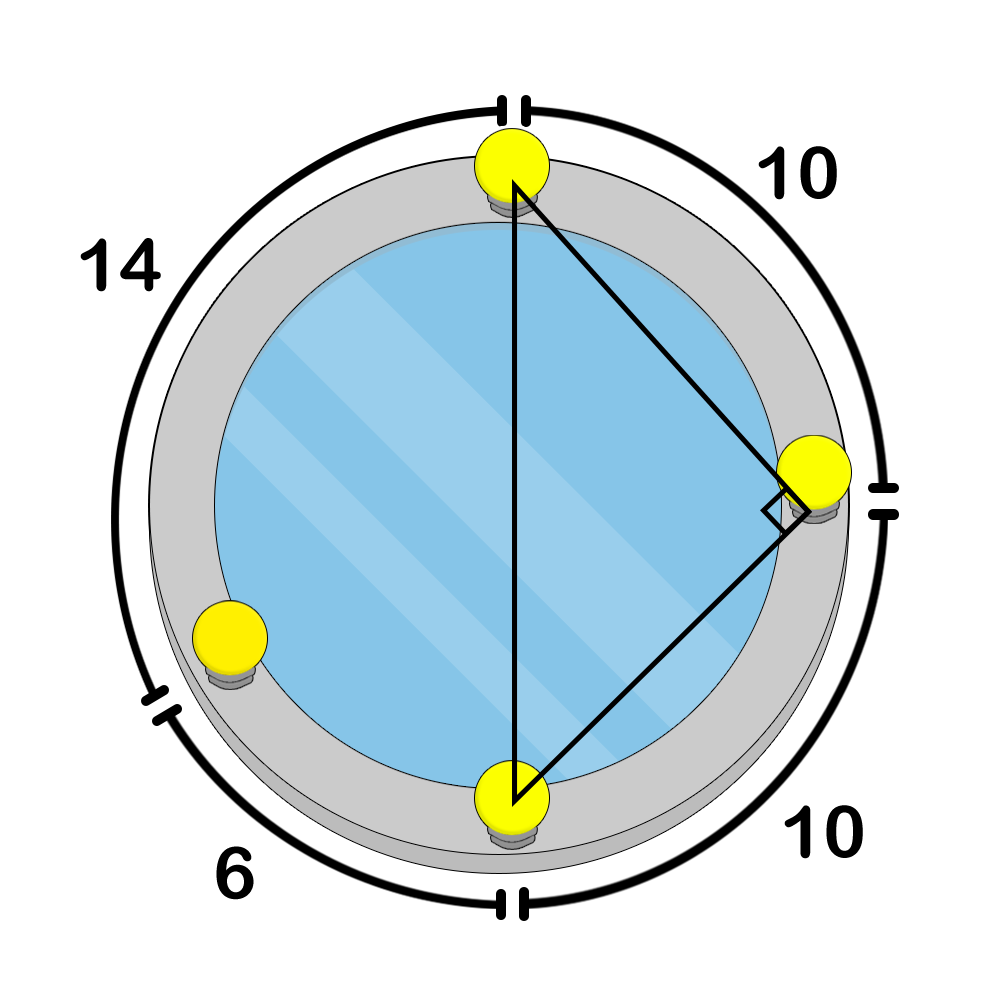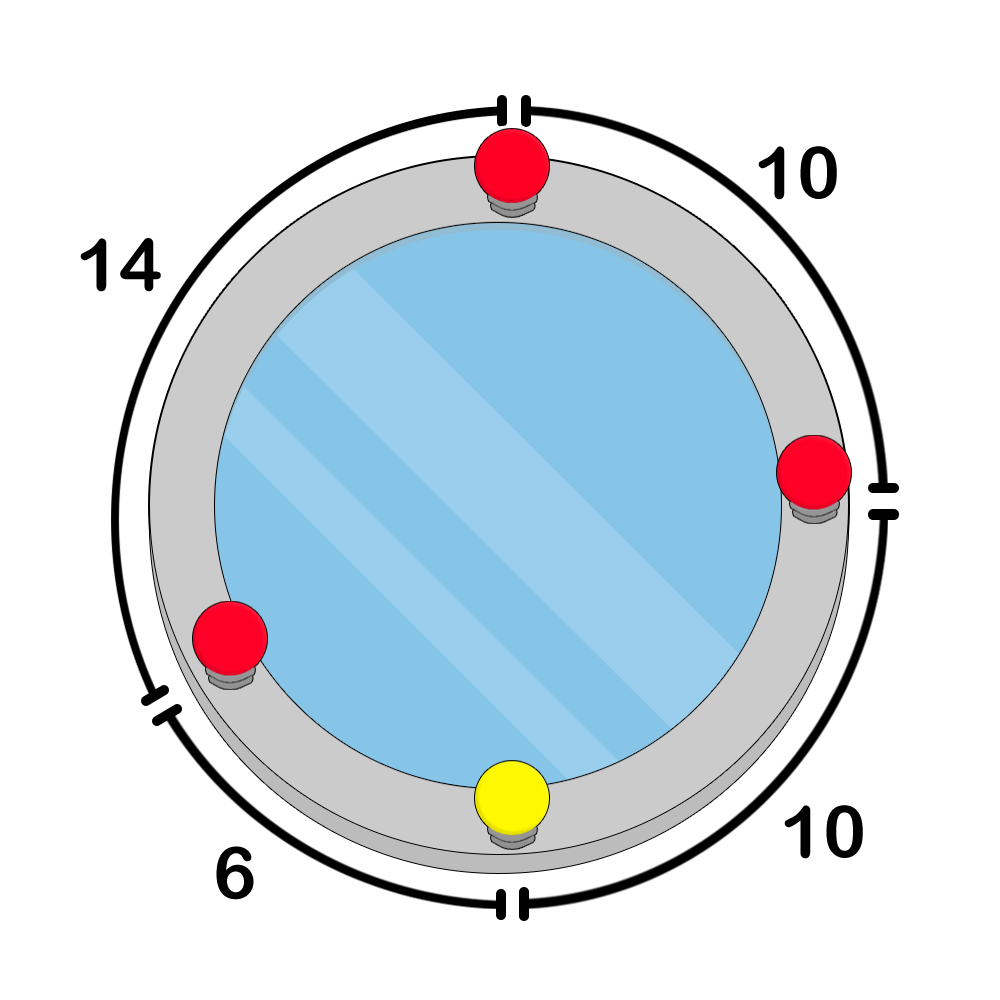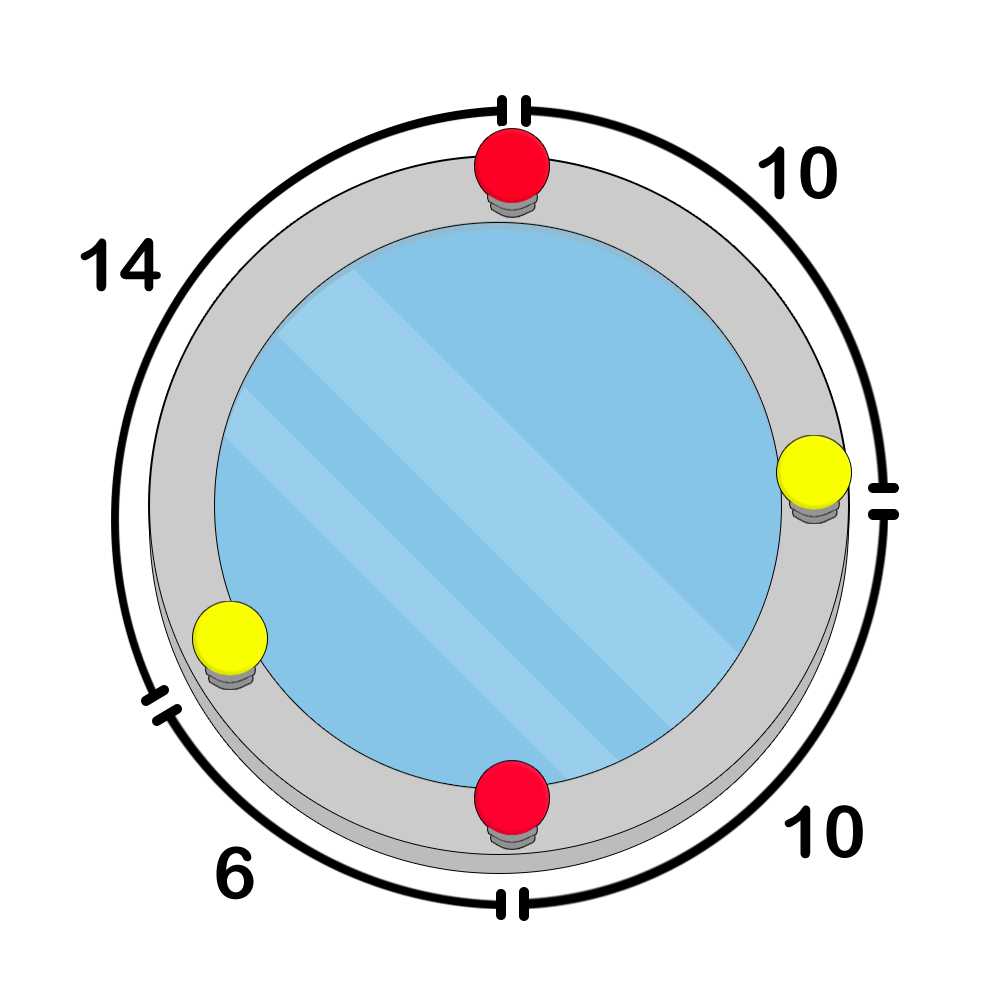Preparando MOJI
Pak Chanek has a mirror in the shape of a circle. There are $$$N$$$ lamps on the circumference numbered from $$$1$$$ to $$$N$$$ in clockwise order. The length of the arc from lamp $$$i$$$ to lamp $$$i+1$$$ is $$$D_i$$$ for $$$1 \leq i \leq N-1$$$. Meanwhile, the length of the arc between lamp $$$N$$$ and lamp $$$1$$$ is $$$D_N$$$.
Pak Chanek wants to colour the lamps with $$$M$$$ different colours. Each lamp can be coloured with one of the $$$M$$$ colours. However, there cannot be three different lamps such that the colours of the three lamps are the same and the triangle made by considering the three lamps as vertices is a right triangle (triangle with one of its angles being exactly $$$90$$$ degrees).
The following are examples of lamp colouring configurations on the circular mirror.
 |  |  |
| Figure 1. an example of an incorrect colouring because lamps $$$1$$$, $$$2$$$, and $$$3$$$ form a right triangle | Figure 2. an example of a correct colouring | Figure 3. an example of a correct colouring |
Before colouring the lamps, Pak Chanek wants to know the number of distinct colouring configurations he can make. Count the number of distinct possible lamp colouring configurations, modulo $$$998\,244\,353$$$.
The first line contains two integers $$$N$$$ and $$$M$$$ ($$$1 \le N \le 3 \cdot 10^5$$$, $$$2 \le M \le 3 \cdot 10^5$$$) — the number of lamps in the mirror and the number of different colours used.
The second line contains $$$N$$$ integers $$$D_1, D_2, \ldots, D_N$$$ ($$$1 \le D_i \le 10^9$$$) — the lengths of the arcs between the lamps in the mirror.
An integer representing the number of possible lamp colouring configurations, modulo $$$998\,244\,353$$$.
4 2 10 10 6 14
10
1 2 10
2
In the first example, all correct lamp colouring configurations are $$$[1, 1, 2, 1]$$$, $$$[1, 1, 2, 2]$$$, $$$[1, 2, 1, 2]$$$, $$$[1, 2, 2, 1]$$$, $$$[1, 2, 2, 2]$$$, $$$[2, 1, 1, 1]$$$, $$$[2, 1, 1, 2]$$$, $$$[2, 1, 2, 1]$$$, $$$[2, 2, 1, 1]$$$, and $$$[2, 2, 1, 2]$$$.